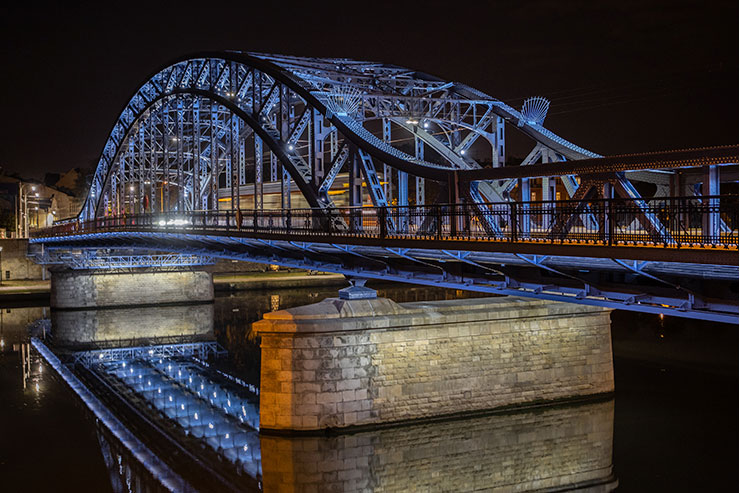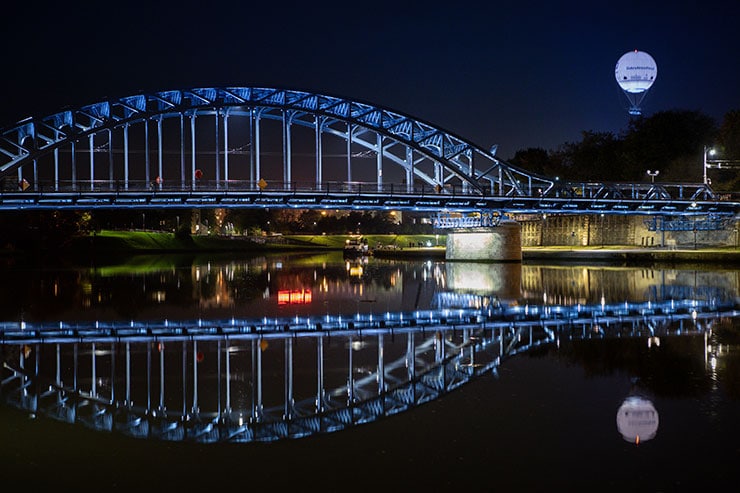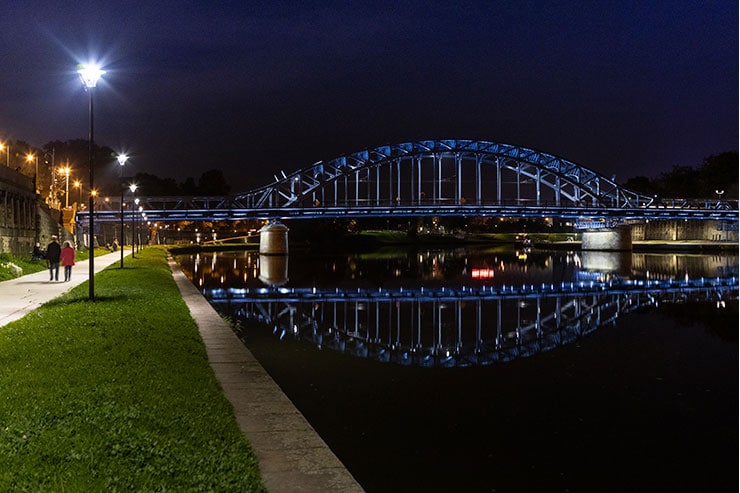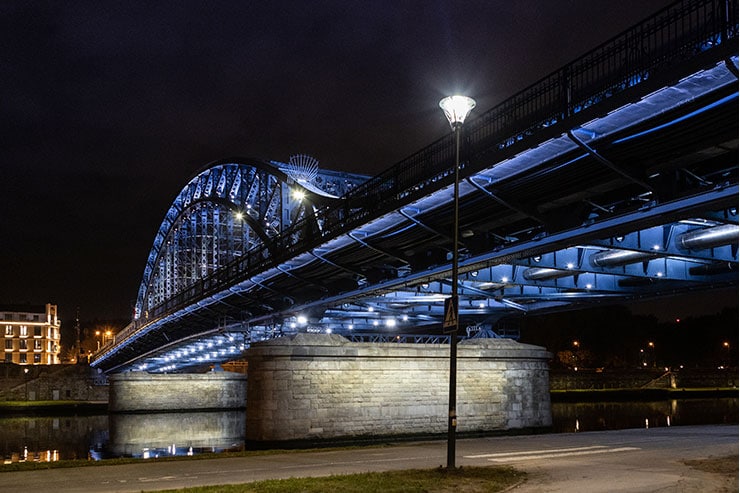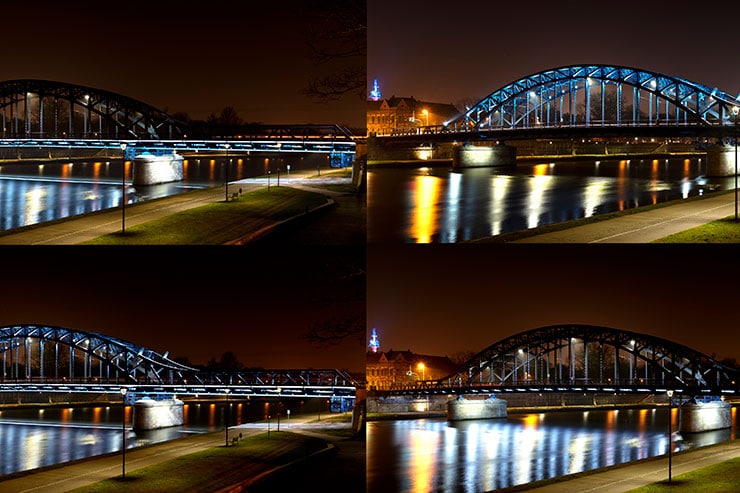- ABOUT
- JUDGING
- CONTACT
- MORE
- 2024 Entries
- Installations 2024
- Past Winners
- Subscribe
- [d]arc directory
- arc magazine
- darc magazine
Piłsudski Bridge, Poland
ProjectPiłsudski BridgeLocationKraków, PolandLighting DesignQlab Laboratory of Light, PolandArchitectAltrans, PolandClientCity of KrakówLighting SuppliersPlatek, Doellken
Kraków is one of the oldest and most beautiful cities in Central Europe. Since the early Middle Ages, as Poland’s then capital, it was one of the most important economic, scientific, and political centres, along with Prague, Vienna, and Wrocław. Today, although it has lost its status as a capital city, it is gladly visited by millions of tourists from Europe, Asia, and America, who become immersed in the unique atmosphere of this historic city, admiring its monuments, squares, and backstreets.
However, the history of this place did not end in the times of kings and knights. The city experienced its heyday at the dawn of the industrial age – at the beginning of the 20th century. It was then that the Marshal Józef Piłsudski Bridge was built, which is the oldest existing and still functioning road bridge in Kraków. At the same time, it bears witness to the craftsmanship of the engineers and builders. It was here that some scenes of Steven Spielberg’s famous film “Schindler’s List” were shot.
The primary task of the illumination of the Marshal Józef Piłsudski Bridge was to highlight the historical value of the bridge, its sophisticated proportions, and its original riveted steel structure. Instead of high-powered projectors, the designers used more small and medium-sized luminaires, optimally positioned not to be visible from the average height level. They have been precisely directed at the elements to be illuminated.
The main superstructure is the most important and recognisable element of the bridge. Proper illumination of this element was crucial for the perception of the entire project. Impressive structural arches connected by a series of transverse trusses and ties are the most interesting elements of the bridge and are a distinct form, standing out compared to all other bridges in Kraków. Subdued and precisely directed lighting allowed the natural beauty of the bridge structure to be emphasised with light, while the cool colour of the light perfectly complements the blue colour of the structure.
The lower part of the bridge – the flooring and the edge of the pavement – is the element that connects the two banks with a single line of light. It can function as an independent light scene – the road line is visible, while the unlit arches fade into darkness.
The masonry pillars made of massive stone blocks have also been illuminated. Yet, due to their slightly different nature, a warmer colour of light has been used to illuminate them. Moreover, RGB spotlights have been designed to enable the illumination of the pillars with different colours and create attractive light scenes that can occasionally be activated. The bridge should remain lit on a day-to-day basis with white light, in line with the original design.
Thanks to the combination of all the illumination elements mentioned above, an interesting visual effect has been achieved. The bridge’s unique silhouette as a vital element of the Kraków’s space has been attractively exposed. The new illumination of the Piłsudski Bridge has become a permanent fixture in the city’s nocturnal panorama.
